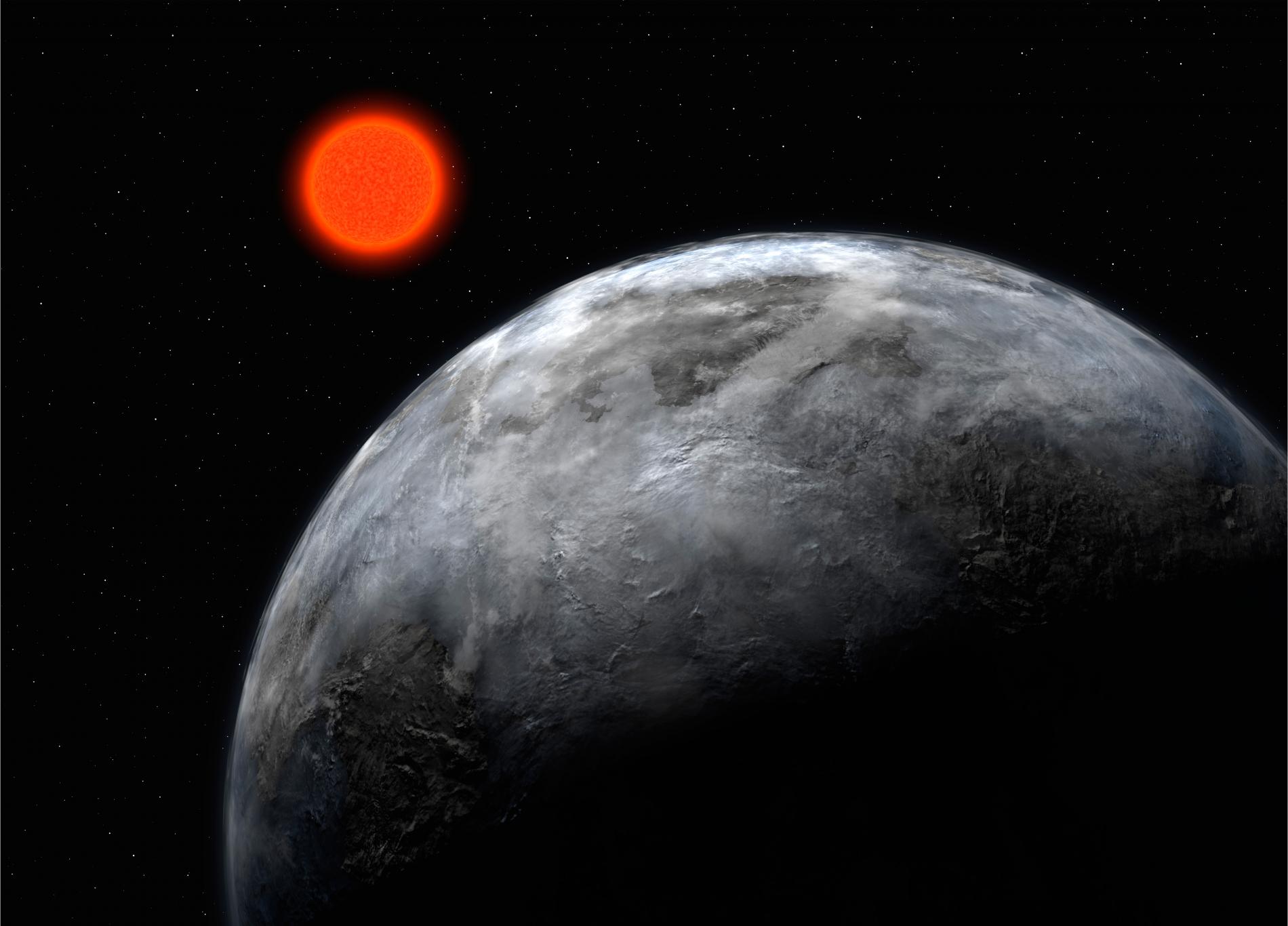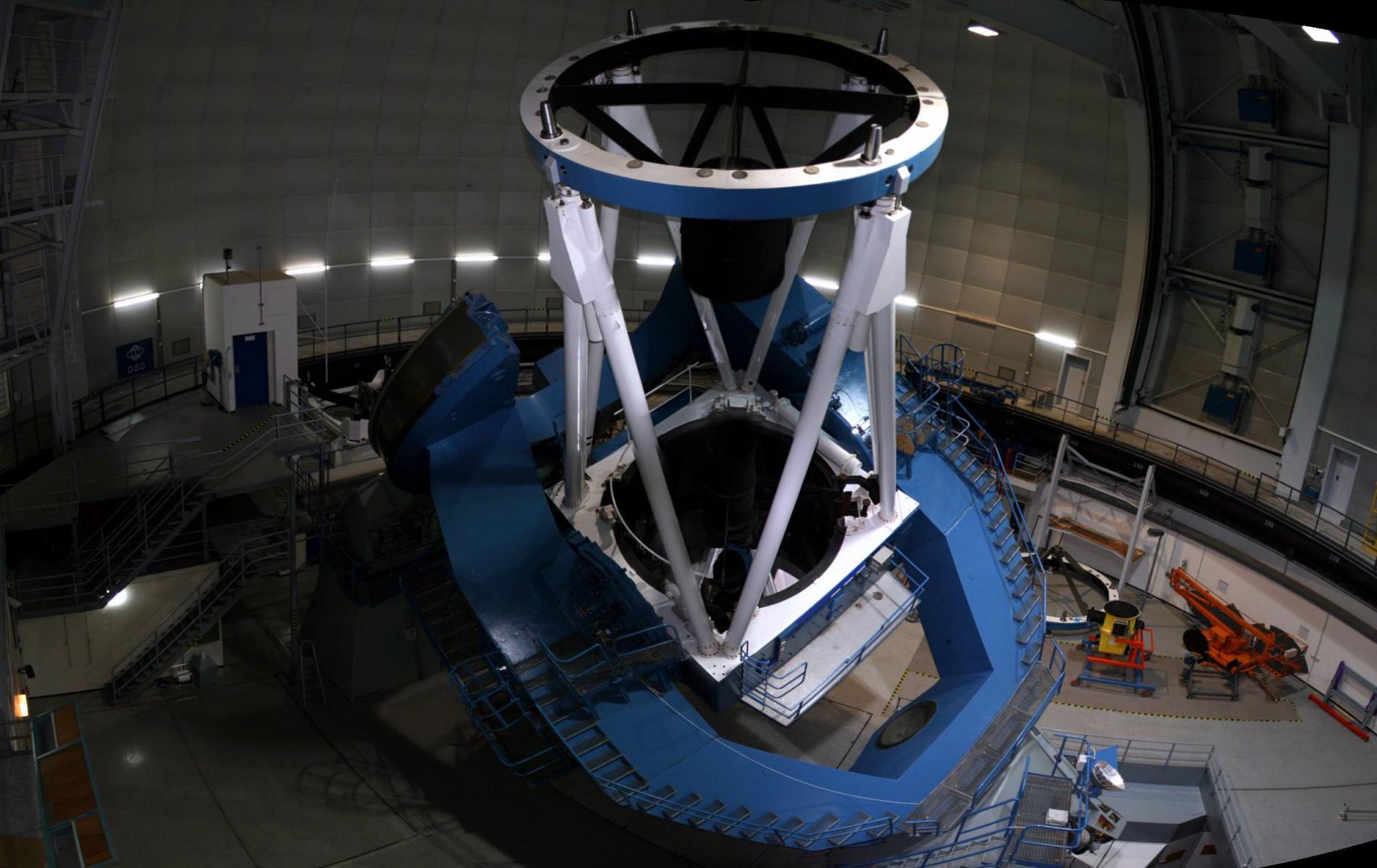CARMENES instrument proves its ability to find Earth-like planets
CARMENES, a visible and infrared spectrograph operating from the Calar Alto observatory (Almeria), is studying a sample of three hundred stars in search of Earth-like planets. The first results of the visible channel, derived from the study of seven planetary systems, show its perfect functioning
CARMENES instrument, developed by a consortium of eleven German and Spanish institutions and coordinated by the Institute of Astrophysics of Andalusia (IAA-CSIC), with the participation of the Institut de Ciències de l'Espai (IEEC-CSIC) and the Center for Astrobiology (CAB, CSIC-INTA) was designed to search for terrestrial planets in the habitability zone, or region around a star where conditions allow the existence of liquid water. Its first results, obtained from the 3.5 meter telescope of Calar Alto Observatory and published today, analyze seven known planetary systems and prove its excellent performance.
CARMENES uses the radial velocity method, which looks for tiny oscillations in the movement of the stars generated by the attraction of the planets that revolve around them. And it does around red dwarf stars (or M dwarfs), smaller than our Sun, that offer the conditions for the existence of liquid water in nearby orbits and in which (unlike in the solar type) we can detect the oscillations produced by planets similar to ours with current technology.
CARMENES has observed, during fifteen months, seven planetary systems studied with HIRES and HARPS, two state of the art instruments in the search of extrasolar planets. The data from CARMENES allowed us to refine our knowledge of these systems, five of them with a single known planet (GJ 15 A, GJ 176, GJ 436, GJ 536 and GJ 1148) and two with several (GJ 581 and GJ 876).

"The results are in some cases in accordance with what we already found in the scientific literature, as in the case of GJ 436, a star with a transiting planet in a very near orbit and with a mass similar to that of Neptune; in others we find discrepancies with previous research, "says José A. Caballero, a researcher at the Center for Astrobiology (CAB, INTA-CSIC) who participates in the research.
For example, CARMENES has found no indication of the existence of a planet around GJ 15A and attributes the signal obtained by HIRES - which was interpreted as a low mass planet revolving around its star every 11.4 days - to the activity of GJ 15A. However, it has found in this star a possible planet candidate, with an orbital period of 7,026 days and a minimum mass fifty times greater than that of Earth.
Likewise, CARMENES data have confirmed the existence of a planet around GJ 1148, with a minimum mass of about ninety times the terrestrial, as well as of a companion whose orbital parameters were unknown. CARMENES has contributed the orbital configuration of the system and has confirmed it as multiple planetary system.
"CARMEN is the result of the efforts of many people, both researchers and engineers, here and in Germany. In this work we compare the visible channel with the most accurate instruments of its kind, and we show that our instrument is in the first division worldwide, and that it reaches the precision necessary to detect rocky planets around red dwarfs", concludes Pedro J. Amado, an astronomer at the Institute of Astrophysics of Andalusia (IAA-CSIC) and co-principal investigator of the CARMENES instrument.
SEARCH OF ROCKY PLANETS AROUND DWARF STARS
"Some fifty planets have been detected around M stars, but their number must be much greater, since between 70 and 80% of the stars in our neighborhood are little studied red dwarfs - points out Jose A. Caballero (CAB, CSIC-INTA). In addition, recent findings of rocky planets in the habitable zone around Proxima Centauri, the closest star to the Sun, or TRAPPIST-1, which shows a planetary system with seven planets in the habitable zone, point to the enormous population of these objects that we can find".

But red dwarfs have very intense cycles of activity, and the phenomena associated with their activity, such as spots or flare, can be confused with the existence of planets. "In fact, false positives are common in the search for extrasolar planets, and here emerges one of the strengths of CARMENES: by observing in the visible and infrared we can confirm the findings without need for further verification. Only CARMENES can do this nowadays", says Pedro J. Amado (IAA-CSIC).
CARMENES is a unique instrument in the world, both in precision and in stability, indispensable qualities to measure the small variations of speed that a planet produces in the stars: CARMENES detects variations of speed in the movement of stars located hundreds of billions of kilometers away with an accuracy of the order of one meter per second. For this, it works under vacuum conditions and with controlled temperatures up to the thousandth degree. Thanks to these characteristics, researchers hope to discover potentially habitable planets in the coming years.
CARMENES, operating in the three-and-a-half meter telescope at the Calar Alto Observatory (Almería), has been developed by a consortium of eleven German and Spanish institutions. In Spain participate the Institute of Astrophysics of Andalusia (IAA-CSIC), which coordinated the project and developed the infrared channel, the Institute of Ciències de l'Espai (IEEC-CSIC), the Universidad Complutense de Madrid, the Institute of Astrophysics of the Canary Islands (IAC) and the Center for Astrobiology (CAB, CSIC-INTA). It has obtained funding from the Max Planck Society (MPG), the Consejo Superior de Investigaciones Científicas (CSIC) and members of the CARMENES consortium, with contributions from the Spanish Ministry of Economy and Finance (MINECO), the states of Baden-Württemberg and Lower Saxony, the German Foundation for Science (DFG), the Klaus Tschira Foundation (KTS), the Regional Government of Andalusia and the European Union through the ERDF / ERF funds.
T. Trifonov et al. "The CARMENES search for exoplanets around M dwarfs. First visual-channel radial velocity measurements and orbital parameter updates of seven M-dwarf planetary systems". Astronomy & Astrophysics (accepted). https://doi.org/10.1051/0004-6361/201731442
Instituto de Astrofísica de Andalucía (IAA-CSIC)
Unidad de Divulgación y Comunicación
Silbia López de Lacalle - sll[arroba]iaa.es - 958230532
http://www.iaa.es
http://www-divulgacion.iaa.es

